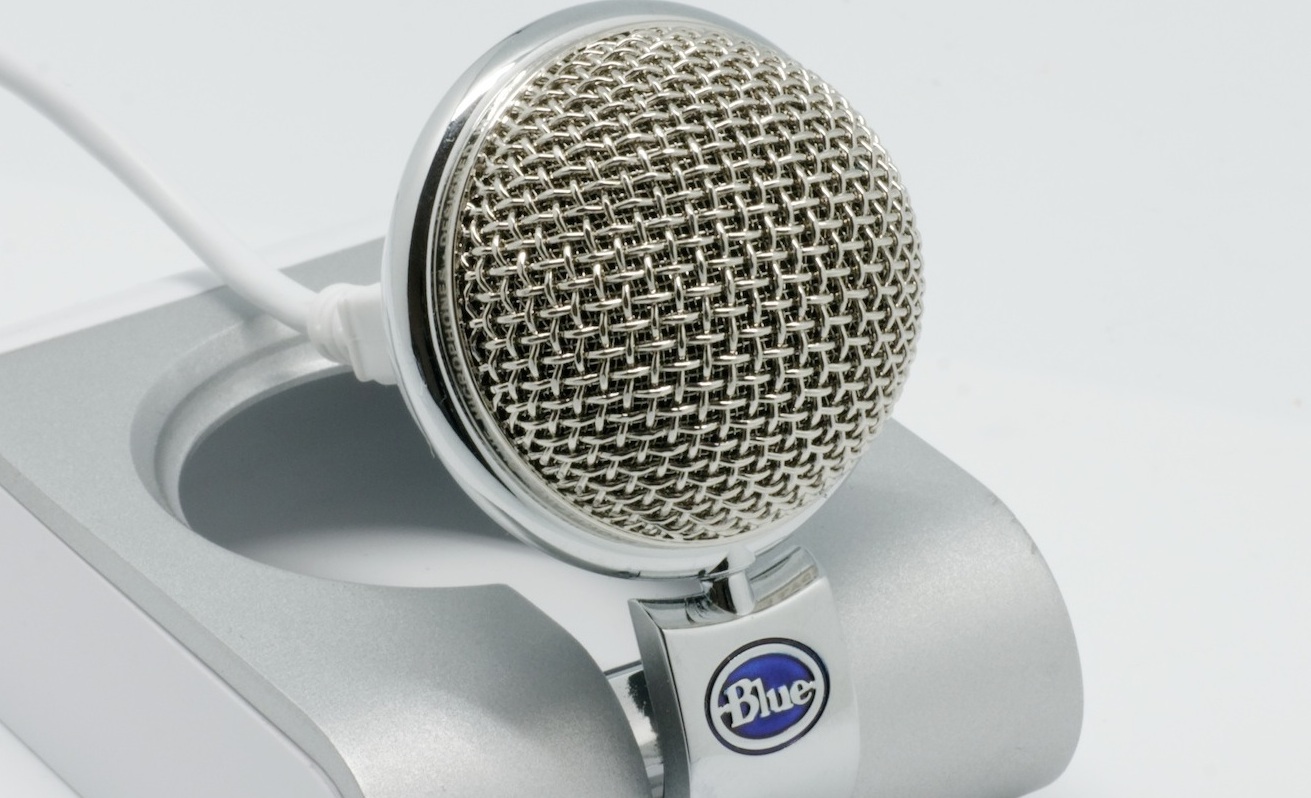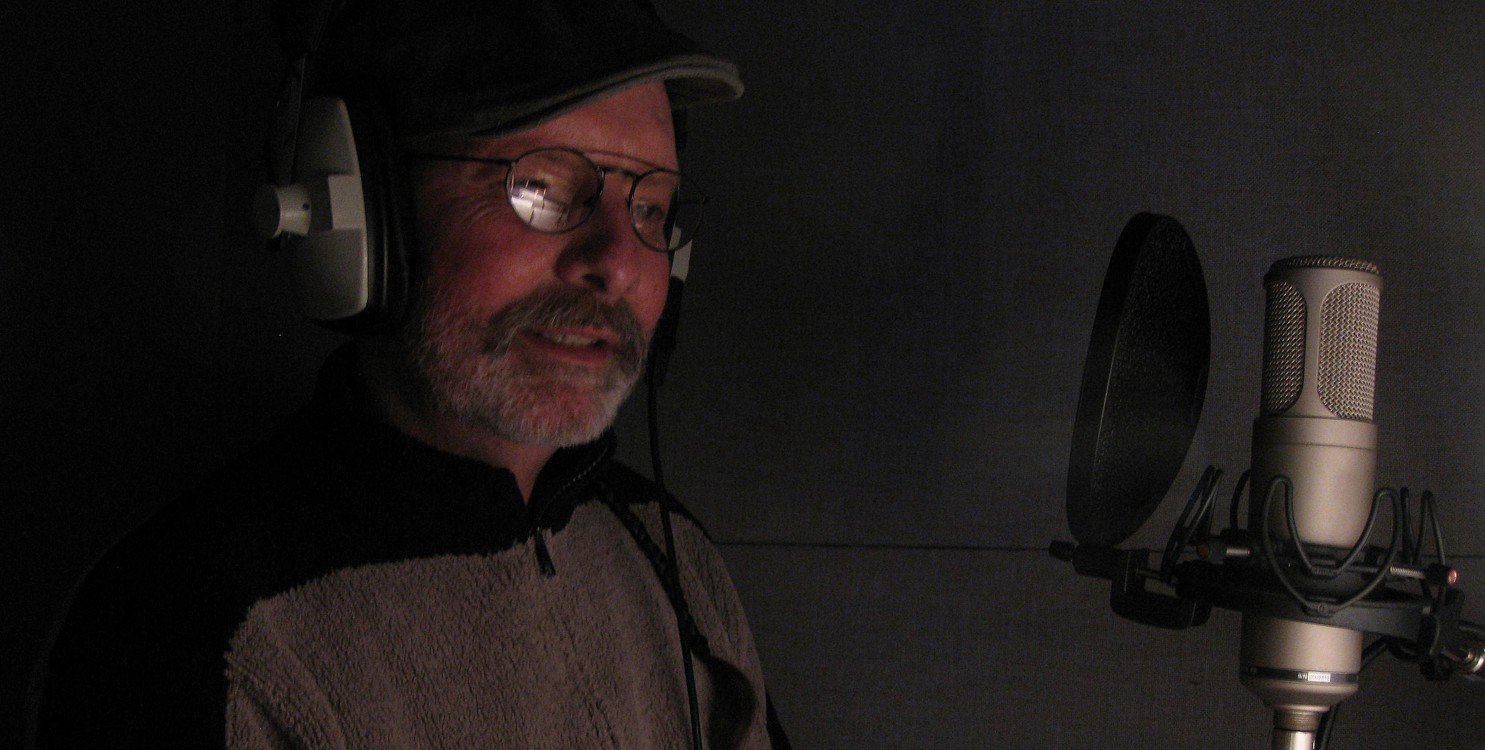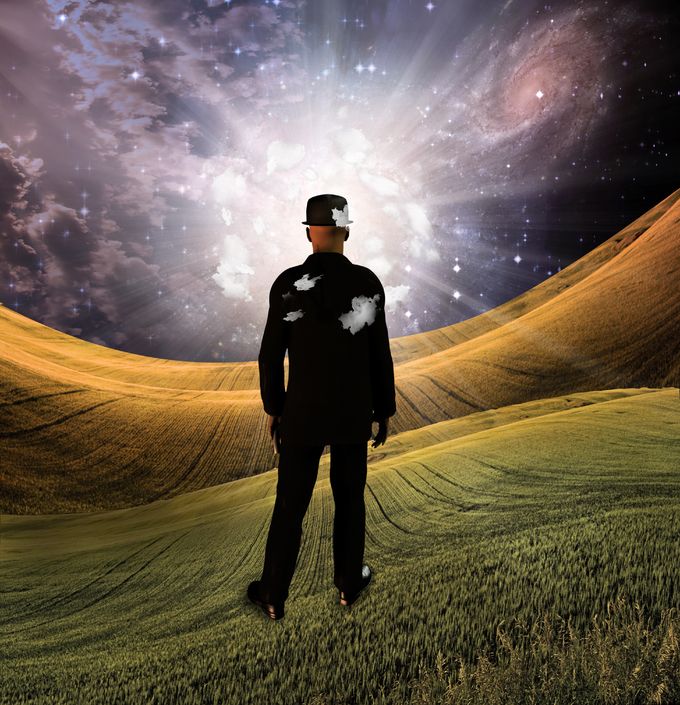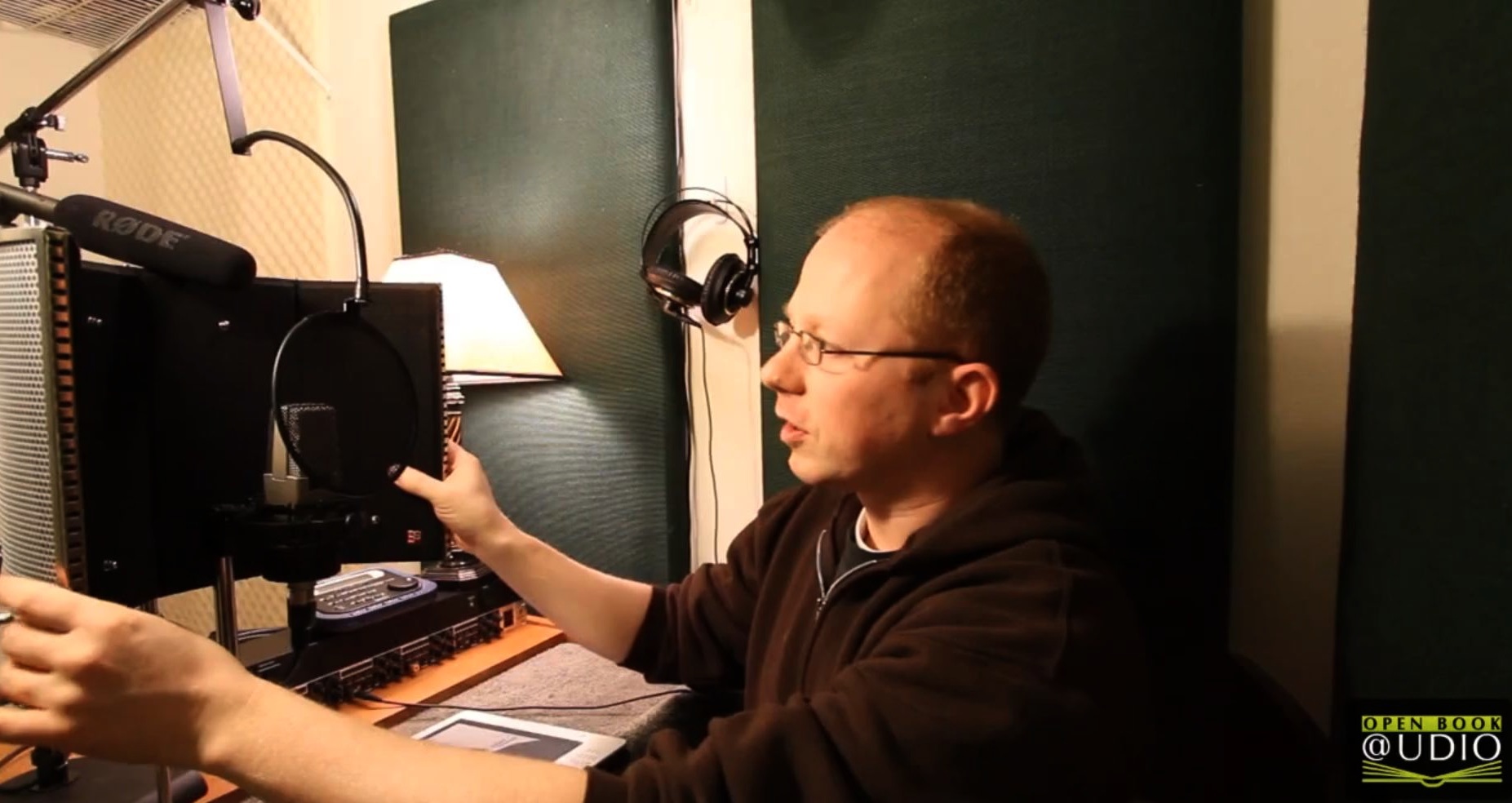As we discussed in Part 1 of this two-part piece, Open Book Audio has established a channel where authors can take a DIY approach and record their books at home. Through aggregation services offered by Open Book Audio, those works that pass muster are then submitted to the key online distribution centers, including audible.com and the iTunes store.
Matt Armstrong joins in the conversation for this segment, as he and Andrew Parker give their best advice for getting top-notch results when recording audiobooks on a personal computer. In the previous segment, Andrew talked about how Open Book Audio first got started. To get his perspective, we asked Matt a similar question.
Lightspeed Illuminati: How did you first get interested in oral storytelling?
Matt Armstrong: My undergraduate degree is in musical theatre. I worked for about five years as a professional actor, mostly in theatre. I also did a little film and television. Toward the end of my career as a professional performer I was also teaching voice at a university in Utah and doing some voiceover work here and there—just little things, a couple small video games and commercials. I found that I really enjoyed it and I have always been into recording studio technology. Over the years I acquired a lot of recording equipment.
I retired from performing back in 2006. I just got tired of being poor. I moved up to Seattle, got a job at Microsoft, and entered the tech industry. I went back to school, got an MBA in Project Management, and kind of set my performing ambitions in the background.
Toward the end of my MBA program, I realized that I had thousands of dollars of studio equipment not being used and wondered what I could do to make some extra money using this equipment.
And I thought: oh, maybe audiobooks. I had started listening to audiobooks when I got a dog back in 2006 and I would take him for walks and wanted something to listen to. I started with the Harry Potter audiobooks and then did the Twilight series: the standard things that people generally get started on.
I called Andrew up. He and I had known each other since 1997 and had been roommates in college for a while. I said, ‘hey, is this something you would be interested in doing with me?’ He said yes and we started off as a production company. We soon discovered, though, that being able to sell an audiobook is a far more difficult thing than recording one—particularly if you want to get your title into the libraries, and most of the major retailers. So, we pivoted a little bit and said, ‘well, let’s focus on building a distribution arm.’ That way, we could distribute the titles that we record and perhaps bring some additional titles in from people who want to publish, but can’t find a way through the retailers’ doors. That is how we got into the current model where we do both production and distribution. We have found that distribution has been wildly successful.
LI: Since you’ve established a very unique business model, there is no pattern you can turn to and say, ‘oh, well, these guys did it this way; we can try this approach.’ It seems as though it is pretty much uncharted territory.
MA: Yes, and frankly that is thrilling for us. Trying to do what someone else has already done doesn’t work real well (I worked on the Zune team at Microsoft, after all—I have first-hand experience…)
There is a book called Blue Ocean Strategy. The essential premise is that most of the businesses that are successful are businesses that find a segment of “Blue Ocean,” where there haven’t been any turf wars fought, and they set up shop there first. It is rare that a company will come into the exact same market using the exact same plan and compete successfully. At that point, the only way to compete is on price. Price is a very poor differentiator, there will always be someone who will try to outdo you in price.
LI: How much does someone have to spend, assuming they already have a computer, to get set up to do quality audiobook recording at home?
AP: Room acoustics can be an issue, but there are DIY ways to deal with it. In my own house, to prep the room that I record in, I went to Home Depot and bought a couple of big pieces of plywood and then I took a couple of foam mattress covers that you can get in any megamart and stapled them to the plywood and put them in a corner of the room, away from the computer. That helps to isolate the recording area.
We recommend that everyone use a pop filter. You can get one on Amazon.com for about $10 and they will take care of 90 to 95 percent of the plosive problems. For people just getting started, my favorite mic to recommend is the Shure SM58 (about $80 at Sweetwater Sound). You can get an adapter cable to plug it directly into the USB port of your computer for about $20. If you use Audacity, which is free recording software, I think you can probably get your own home setup done, including some of the room treatment aspects, for around four or five hundred dollars.
LI: Matt, what do you see as the toughest home-recording challenges?
MA: I can talk from the point of view of a lot of the titles that we end up not accepting. The major problems are usually in one of three areas.
As Andrew mentioned, the biggest issue we come across is room noise. People record in rooms with hardwood floors or echo-y walls or ceilings. You can actually hear the room— it sounds something like reverb or a tinny echo.
Most professionally recorded audiobooks are recorded in a studio where there is not a lot of that slapback echo or room noise and it sounds very intimate and close.
As funny as it sounds, I sometimes recommend to people who are recording from home is to haul the microphone into their walk-in closet or into a very small room where they hang comforters on the wall—something to reduce that echo-y sound. A walk-in closet is almost the best place in the house to record. You have got all those clothes hanging there. They absorb a ton of sound and so all you get is the direct input into the microphone and not the echo off the back wall that you will sometimes hear in a larger room.
LI: That’s one good tip. What would be the next biggest issue you regularly encounter?
MA: I am going to combine two things: mic placement and volume. A lot of recording mics are very sensitive and very directional and the difference between being four inches away and six inches away from the microphone can be huge, in terms of the quality of the sound. So a lot of times people will move around (because it is very difficult to record an audiobook all in one session), the microphone will be in a different location so the quality of the sound will change from session to session.
It’s also a problem if the input on the microphone isn’t set correctly through the digital audio recording software. If you get the red light because you exceeded the peak level when your microphone input got too loud, you get digital clipping and there is nothing you can do to get rid of it.
People will often turn the microphone input down too much so that it is too soft and the “signal-to-noise” ratio is too low or they won’t turn it down enough and they will get the peaking. It is a fine line that you have to run between those two extremes. If you are using some of the free software or the included software (like GarageBand), if you don’t know what you are doing with audio, you really have to watch that input gain. The phrase that I use a lot is work the mic.
Working the mic means, essentially, that if you are going to get louder, you should move back slightly from the mic or if you are going to get quieter you should move a little bit closer to the mic.
That is something that you get with practice. I normally suggest that the narrator record a couple of small sections, and check whether or not the red light is coming on. If so, back off on your placement to the microphone or how loud you get with your voice or turn down the input a little bit. Try to keep the volume as consistent as possible throughout the whole book. There are few things that are as annoying as having to turn an audiobook up and down and up and down.
LI: Do you think it is best for people to monitor their voice with headphones on?
MA: Absolutely. I will not record unless I have got headphones on. Even when I am directing someone else recording, I make them wear headphones, too. It’s vital to be able to hear yourself the way the microphone hears you, and to hear when something goes wrong if you are recording on your own.
LI: Do you have mic recommendations?
MA: There are three different kinds of mics that I recommend to people just getting started: the large-diaphragm dynamic mic (such as the Rode Procaster or RE-20), the large-diaphragm condenser mic (of which there are thousands of options), and the shotgun mic (such as the Rode NTG-2).
The large-diaphragm dynamic mic are the same kinds of mics that get used in radio stations. They are not as sensitive so they won’t pick up as much of the ambient noise as other mics might and they also tend to be a little bit more directional. If you have a noisy computer, you can point the microphone away from the computer and it will pick up less of that ambient noise. They do tend to be a little “boomy” and miss some of the sparkle in the high end of the voice.
The shotgun mics are long and skinny and they look like a 12-inch lipstick tube. Those are the ones they use when doing television or movies and they want to get the actor’s voices on set. Those are extremely directional. They will reject a lot of off-axis sound, which is good if you are in a noisy environment. But, where it becomes tricky is that shotgun mics are very directionally sensitive. If you move two inches to the right or two inches to the left, you are going to totally change the quality of the sound.
Then the final variety of mic that I suggest is the large-diaphragm condenser (such as the Blue Snowball). A fairly inexpensive one (though it’s not USB) that I’ve just started playing around with is the Rode NT1A. These mics are the most sensitive. You’re going to get the most color and the most nuance in the quality of the voice, but these are the kind of microphones that you really need to have in a quiet space. If you’re in a noisy space, these are not going to work for you at all.
LI: Any other concerns in terms of audiobook narration?
MA: Another area where I see a lot of problems is with the actual narration. In my mind, a good audio narration shouldn’t sound like a person is reading it. It should sound like they are just talking. The instant that it starts to become stilted or hammy or overacted is the instant that it starts drawing attention to the narration and away from the book. The best audiobook narrations are invisible.
Sometimes narrators go way too far with character voices, way over the top. The key is to make the character’s voices different enough that listeners can tell the characters apart, but not so that they think, ‘What in the world is that person doing?’
LI: How much time would you say goes into the recording and mastering of an audiobook?
MA: For every finished hour of an audiobook, there are usually between 5 and 6 hours of work that goes into getting that finished hour done.
It’s an hour to an hour and a half for every finished hour of reading. It takes two to three hours to edit that hour and then there is an hour to an hour and a half of mixing and mastering to get the quality right.
LI: Any other tips for would-be narrators?
MA: I wrote a blog post a couple of months ago about why authors should almost never narrate their own audiobooks. I was being a little hyperbolic in it, because we had just come through a string of ten or fifteen books that we had to reject because the quality was just very poor. I hate to see someone spend 20 or 30 or 40 hours on an audiobook and have it rejected because the quality just isn’t there.
So my suggestion is: make sure you are doing check-ins. Don’t do the whole thing at once and then say, ‘OK, now is it any good?’
Do a chapter, take it to someone who listens to audiobooks, and get their opinion. Even more so, make sure you are listening to a lot of audiobooks. We get a lot of audiobooks from people who don’t listen to audiobooks. As a result, they don’t know what the industry expects or have any bar of quality against which they can compare their work. See what is out there.
If you’ve got the first chapter of your book recorded, save it as an MP3, and send it to us. We will give it a listen. We might say, ‘this isn’t something we would be able to take,’ or ‘this sounds great, keep it up,’ or ‘here are some areas where you could improve.’ Do it sooner, rather than waiting until the entire book is done.
LI: Just one final question: how would you characterize the typical audiobook listener?
AP: Even though printed books have been around for a long time and certainly the popularity of ebooks has really increased in the last few years, the most loyal and the most well-read audience in the world is very likely people who listen to audiobooks.
The Audiobook Publisher’s Association of America (the APAA) puts out a bunch of stats about the kinds of audiobook listeners or the patterns associated with audiobook listeners. They are typically more well-read, they are typically better educated, and they typically buy more books than even your average reader.
People don’t generally realize that there is an enormous audience out there for a good audiobook. Even though it takes some time and there are costs to create an audiobook, the good news is: audiobooks typically last in terms of their popularity. They are fairly consistent in terms of their return, whereas with a printed book or an ebook, you get a big push right at the front and then it trails off. Audiobooks tend to be fairly consistent. You are certainly still going to get that push as it gets released, but in terms of leveling off, it levels off at a higher rate than ebooks or printed books.
For more details about how to get an audiobook recorded, produced, and distributed, visit the Open Book Audio FAQ.
Photograph: © Marie-Lan Nguyen / Wikimedia Commons / CC-BY 2.5.





